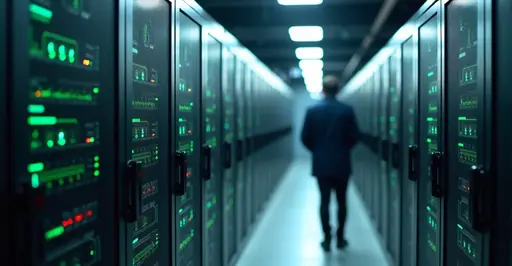
Global Push for Data Center Energy Efficiency
International authorities are proposing comprehensive new regulations to address the growing energy consumption of data centers worldwide. As digital transformation accelerates and artificial intelligence demands skyrocket, data centers have become one of the fastest-growing energy consumers globally.
The Energy Challenge
According to the International Energy Agency (IEA), data centers currently consume 1-1.3% of global electricity demand, representing 240-340 TWh annually. This excludes cryptocurrency mining, which adds another 110 TWh. The IEA projects that data center electricity use could double between 2022 and 2026, driven primarily by AI computations and increased digitalization.
European Union Leads Regulatory Charge
The European Union has taken the most aggressive stance with its revised Energy Efficiency Directive (EU/2023/1791), which entered force in October 2023. The directive introduces mandatory monitoring and reporting requirements for data centers with significant energy consumption. A European database will collect and publish data on energy performance and water footprint.
Under the new rules, data centers must report detailed information including:
- Total energy consumption and power usage effectiveness (PUE)
- Water usage and cooling efficiency metrics
- Renewable energy procurement percentages
- Waste heat utilization rates
Germany's Strict National Implementation
Germany has already implemented its Energy Efficiency Act (EnEfG), which applies to data centers with capacity of 300 kW or more. The law mandates:
- 50% renewable electricity share by 2024, increasing to 100% by 2027
- Minimum 10% energy reuse (including waste heat) for new data centers from July 2026
- Gradual increases to 20% energy reuse by 2028
- Mandatory energy management systems by July 2025
AI Act Adds Energy Transparency Requirements
The EU AI Act, which entered force in August 2024, includes specific energy efficiency requirements for artificial intelligence systems. Providers of General-Purpose AI models must create and maintain technical documentation including energy consumption breakdowns. The AI Office can demand this documentation with no prior notice.
Global Impact and Industry Response
Major technology companies have been proactive in addressing energy concerns. Amazon, Microsoft, Google, and Meta have collectively contracted nearly 50 GW of renewable energy through power purchase agreements – equivalent to Sweden's entire generation capacity. These companies have also committed to matching 100% of their operational electricity consumption with renewable energy purchases.
However, critics argue that annual matching doesn't ensure real-time carbon-free operations, as renewable energy may be purchased from different grids or regions than where demand is located.
Technical Challenges and Solutions
Meeting new efficiency standards will require significant technological investments. Key areas of focus include:
- Advanced cooling technologies to improve PUE ratios
- Waste heat recovery systems for district heating
- AI-powered energy optimization systems
- Liquid cooling solutions for high-density computing
- Renewable energy integration and storage solutions
Economic Implications
The regulatory changes will have substantial economic impacts. Data center operators face potential fines of up to €100,000 for non-compliance in Germany, while EU-wide penalties under the AI Act can reach €15 million or 3% of global turnover.
Industry analysts estimate that compliance costs could add 15-25% to new data center construction costs, but these investments are expected to pay back through reduced energy bills within 3-5 years.
Future Outlook
The regulatory landscape continues to evolve rapidly. The European Commission is exploring an AI energy and emissions labeling scheme similar to existing appliance efficiency ratings. International standards organizations including ISO and IEC are developing global standards for environmental sustainability in AI.
As digital infrastructure becomes increasingly critical to economic activity, balancing energy efficiency with computational performance will remain a key challenge for regulators and industry leaders alike.

 Nederlands
Nederlands
 English
English
 Français
Français
 Deutsch
Deutsch
 Español
Español
 Português
Português



